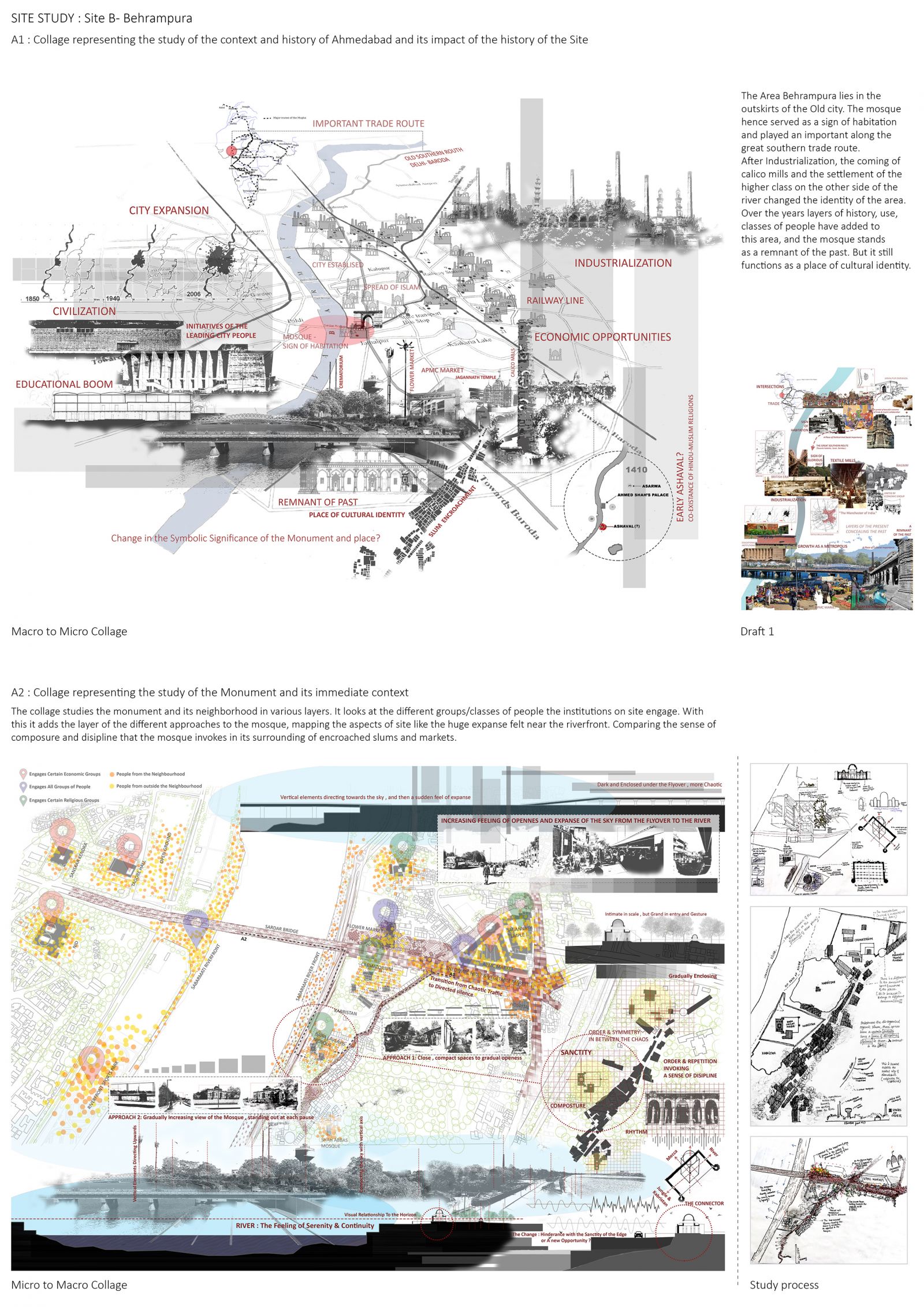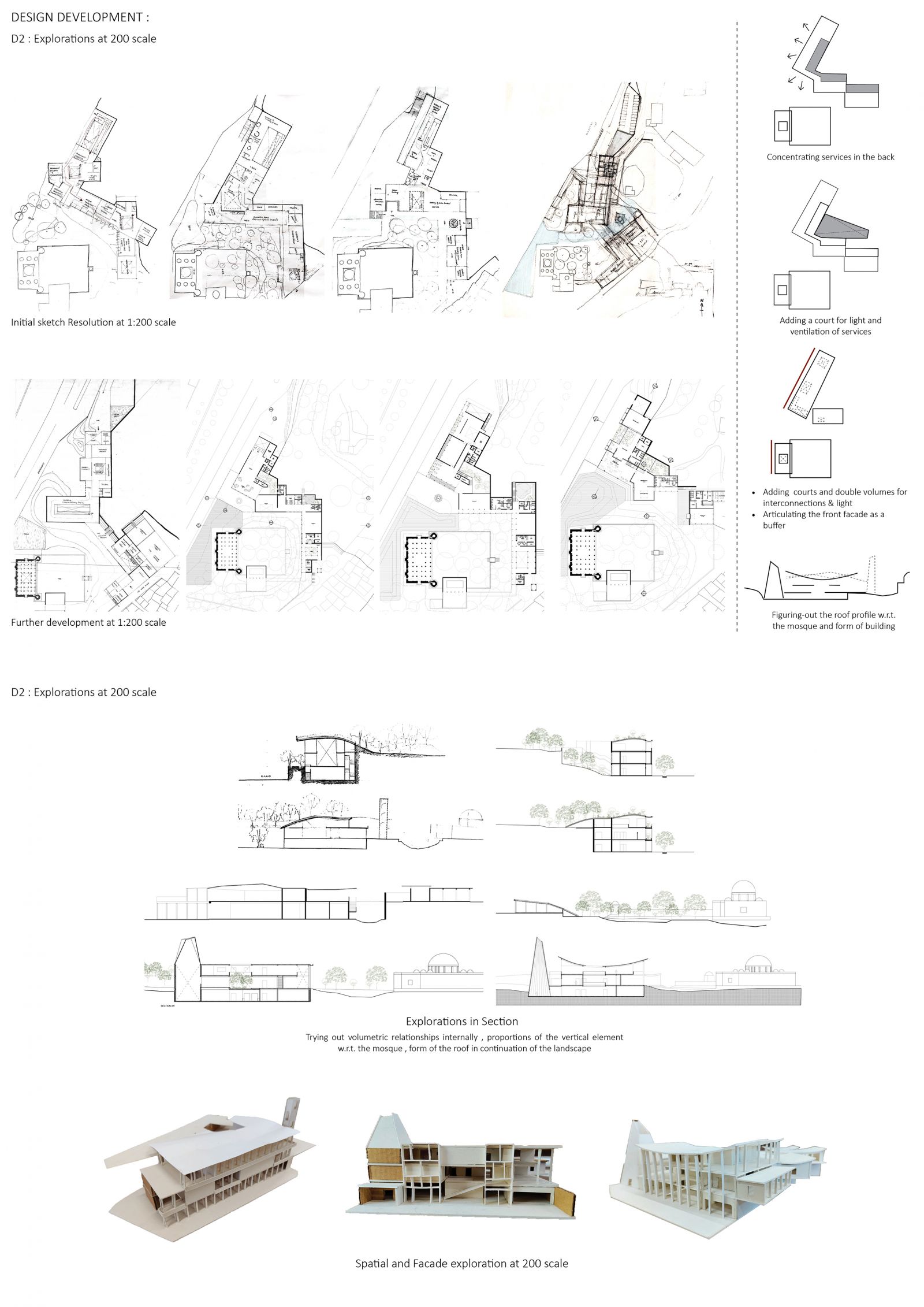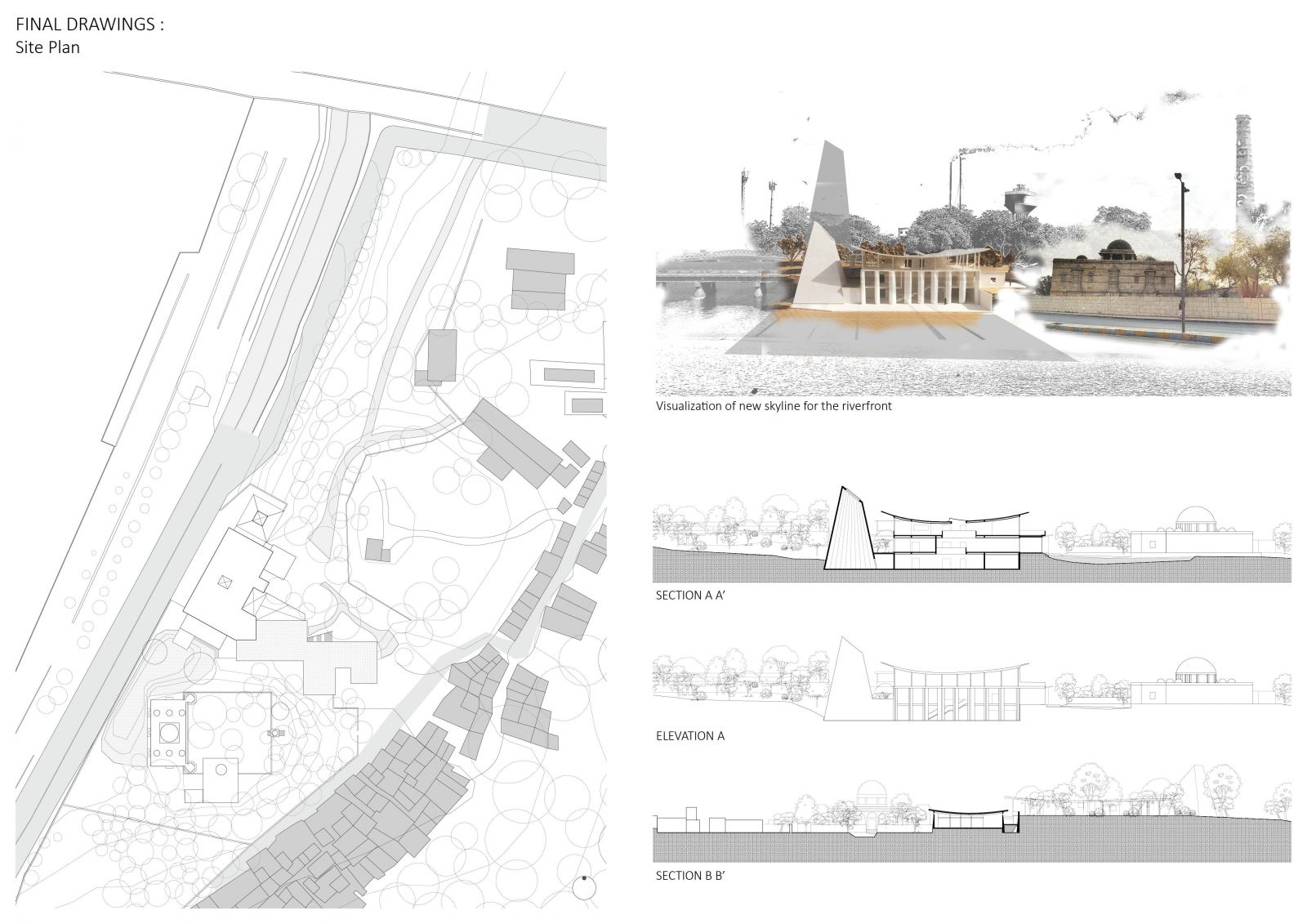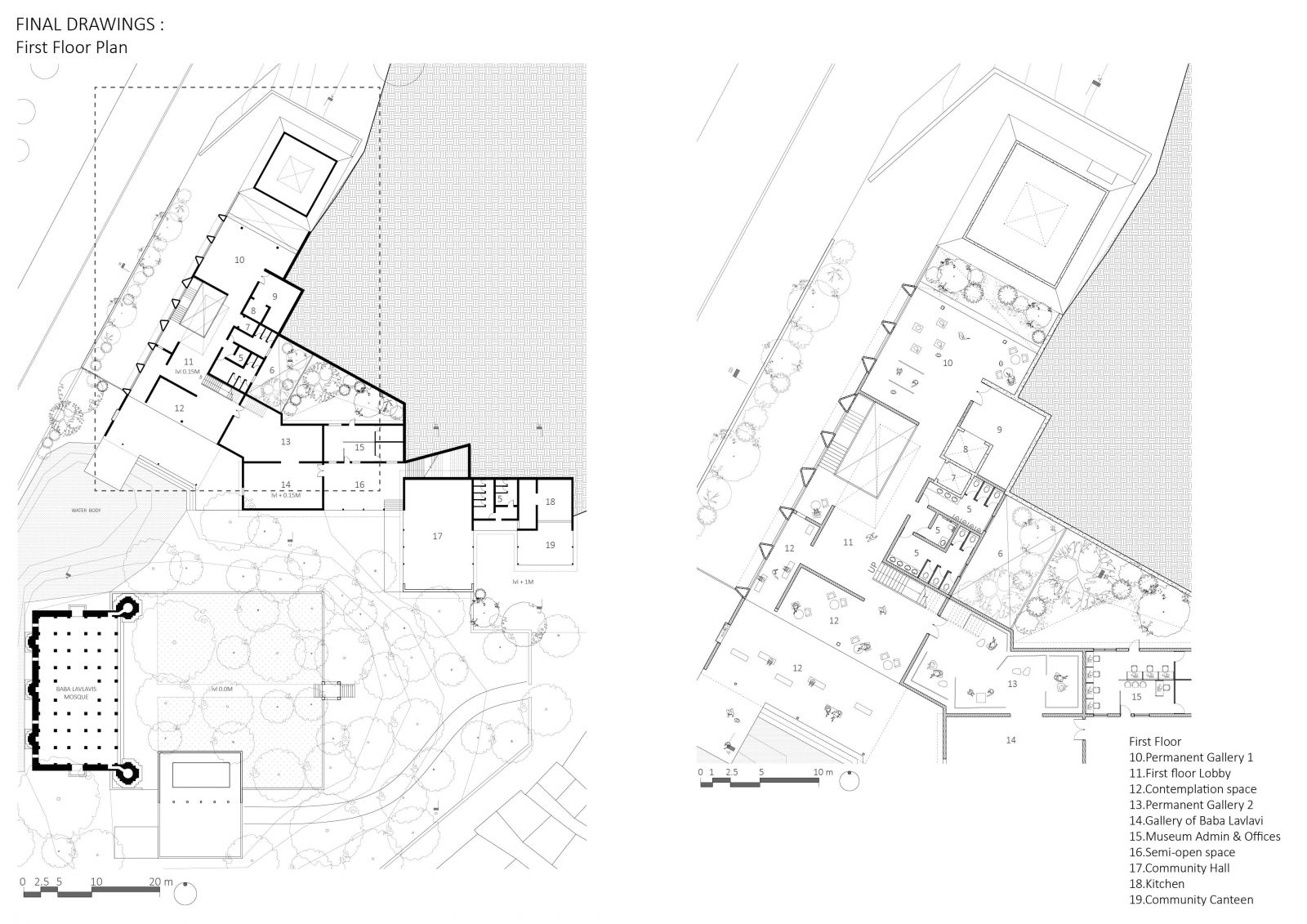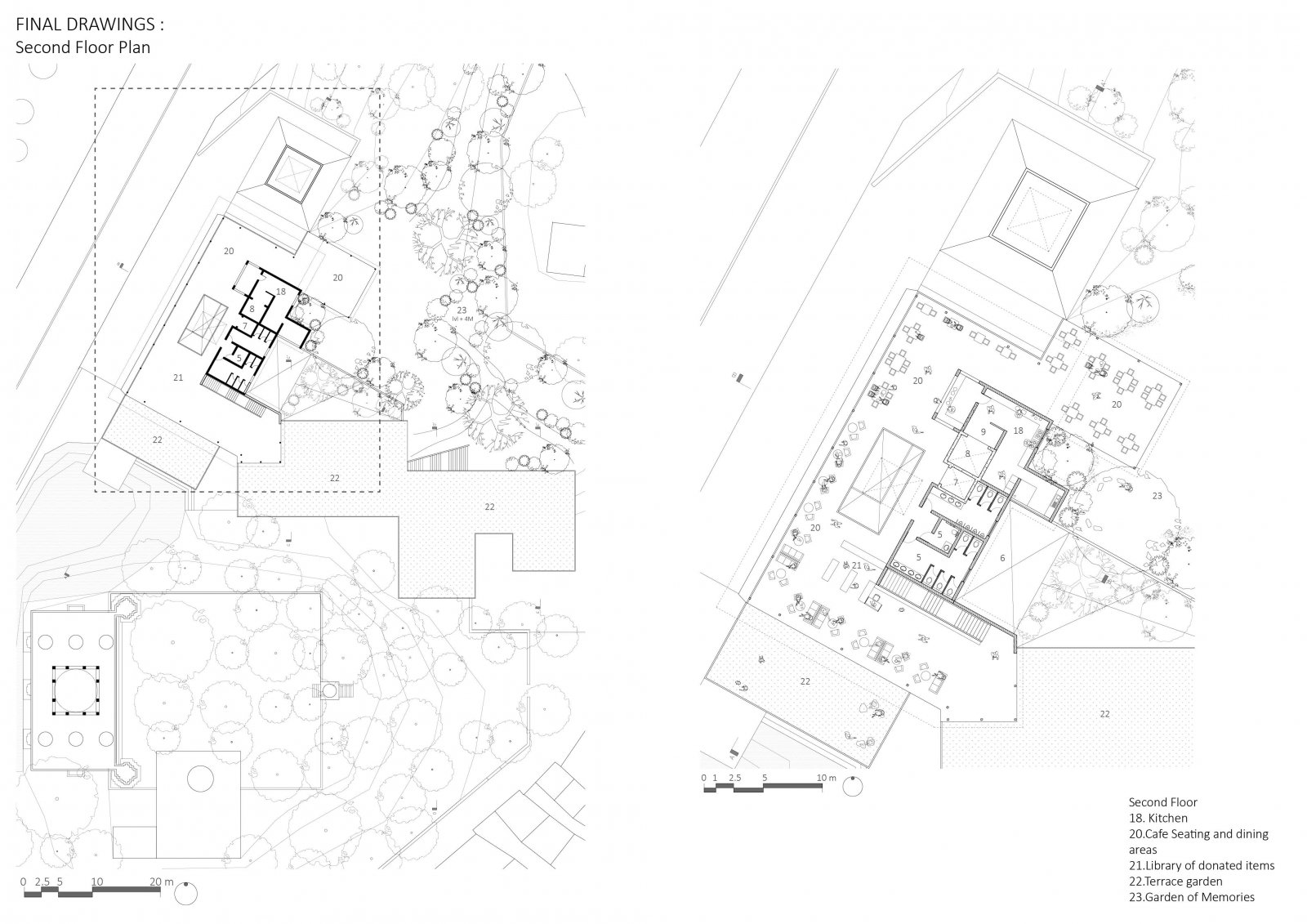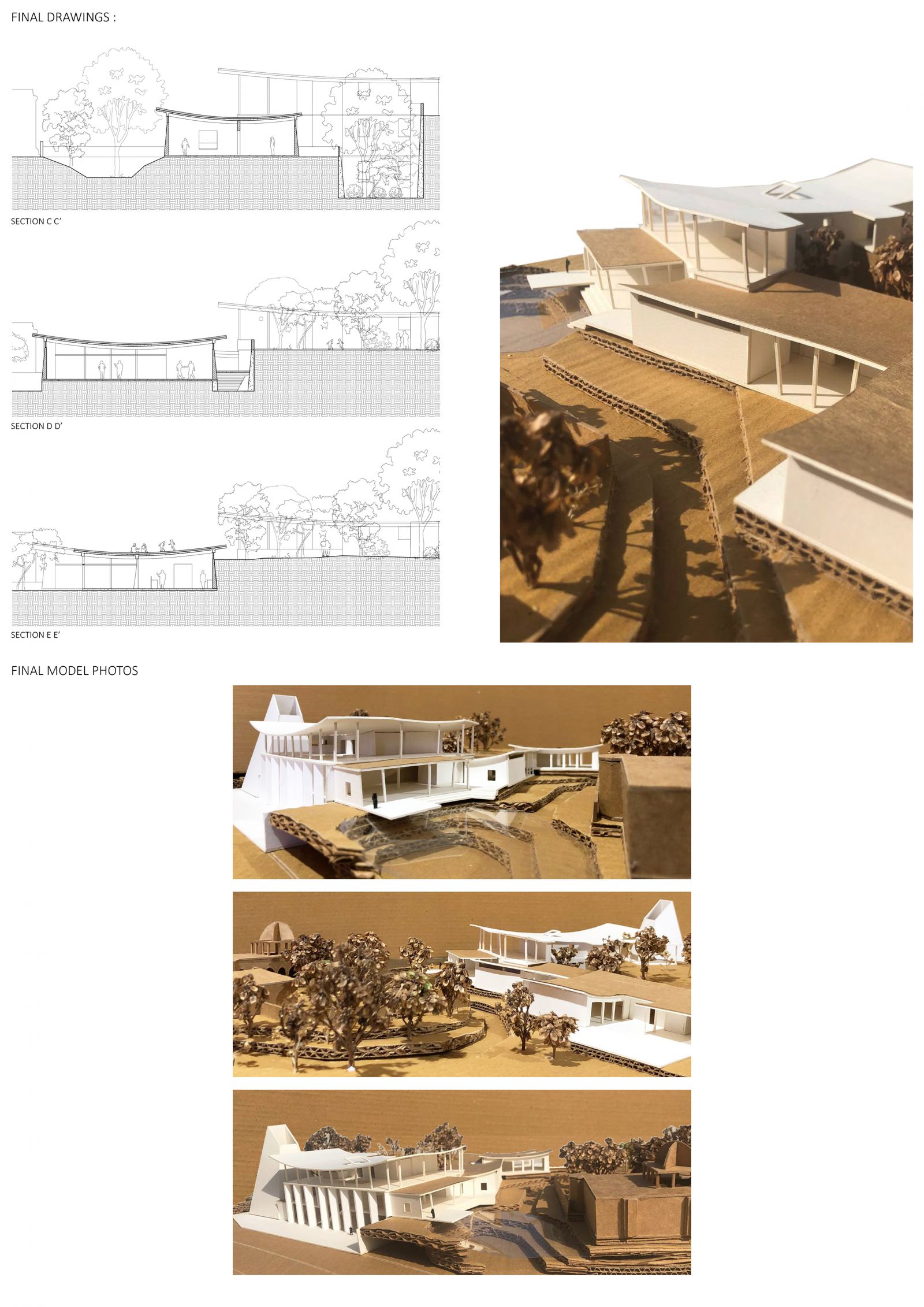- Student CHAUHAN VIPASHA VIJAY
- Code UA7517
- Faculty Architecture
- Unit L3 Studio Unit
- Tutor/s Sonal Sancheti,Ami Gokani
- TA Richa Surati
Taking from the philosophical idea of the Mosque, it was never just a place for worship, it was made as a humble gesture towards the community. It was a place where people could go for silence and reflection, for gathering and discussions and was also a place from where Baba Lavlavi would participate in administrative and political activities along with his supporters towards the betterment of the community and the city. Currently we live in times where everyone is searching for what will be life after pandemic, realizing a need for gathering, coming together and also the need to take a pause, a break in hectic lives and spend time both alone as well as with friends and family. Memories, reflecting on them as well as sharing them gives a person the feeling of not being alone, of being a part of a larger community. A museum of memory will help strengthen the bonds that can connect generations. It makes people remember themselves in these places and can become a place for cultural expression, dialogue, learning, and understanding. The Museum of memories is like a journey that leads to silence and peace of mind. Situated in-between the crematorium, kabristan, mosque and the river, it acts as a connector. The internal spaces are like a transition between in-ward looking galleries and semi-open spaces that connect to the sky, river or landscape and become spaces for dialogue or contemplation. Starting with a grand presence from the riverfront, the journey pauses at the view of the mosque reflected in the pond and ends at the garden at the level of the kabristan with the museum having a minimal presence. The museum becomes a place of looking back and reflecting on, but also a place of making new memories and connecting. The visitor leaves with a feeling of being part of a larger whole.
